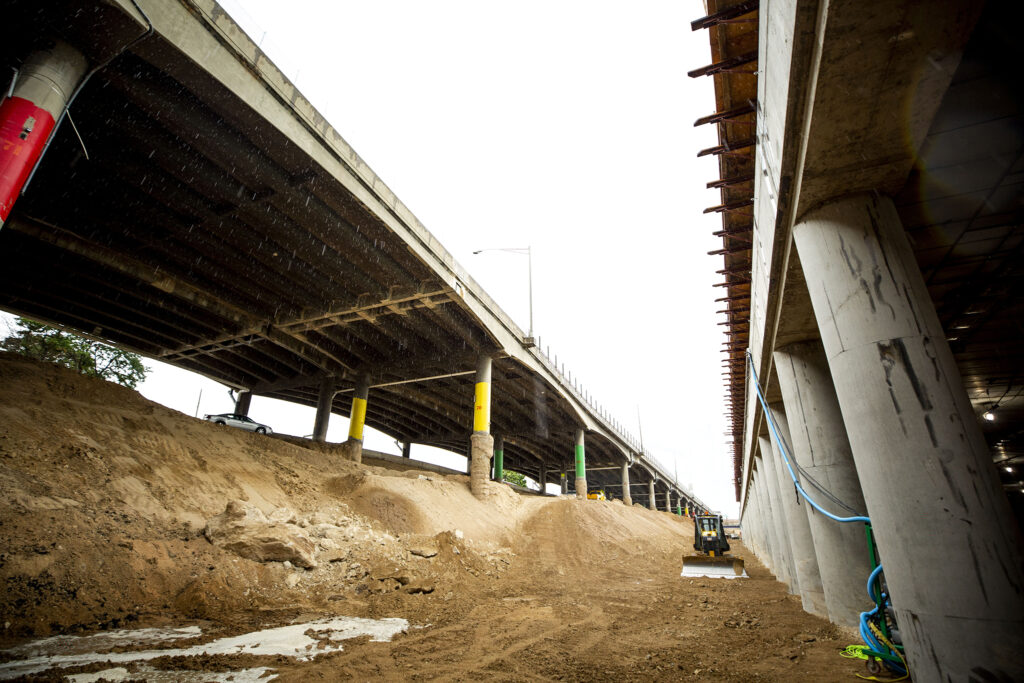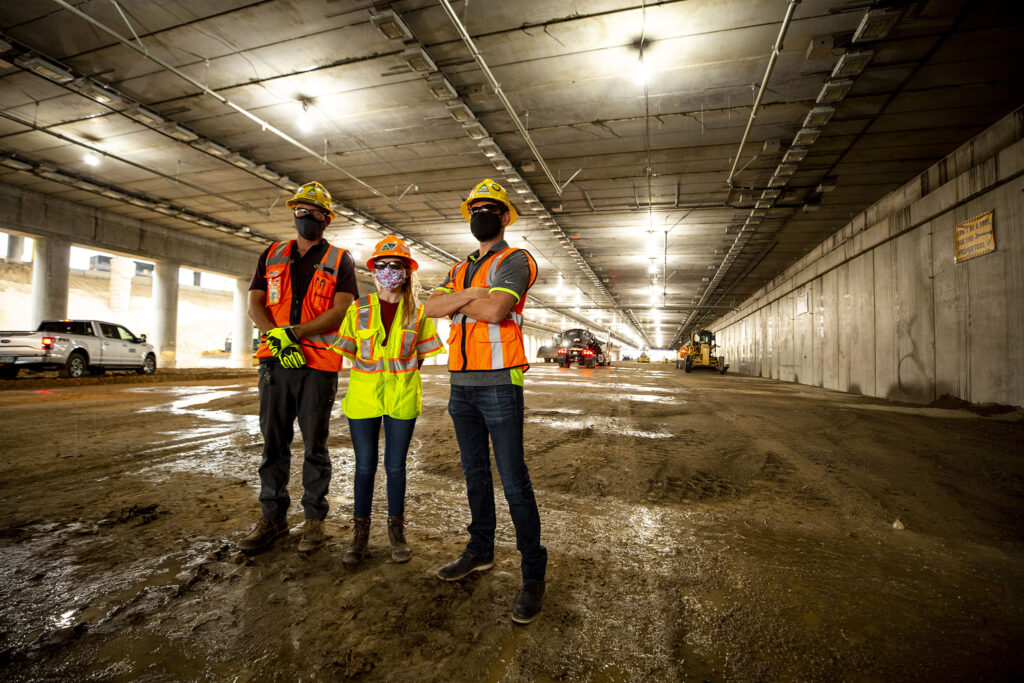The pandemic allowed CDOT to finish some highway-expansion milestones a little bit ahead of schedule.

While activists once hoped lawsuits would stop I-70 from being expanded and lowered through Elyria Swansea, only time now stands in the way of CDOT’s massive undertaking. Since the agency broke ground on the project back in 2018, contractor Kiewit Meridiam Partners has overseen more than 2,000,000 man-hours on the project. Most of that has been digging beneath the city’s natural surface to make way for westbound traffic, a process that must be completed before crews can begin demolishing the old viaduct looming over the project.
Stacia Sellers, a CDOT spokeswoman, said Kiewit was able to hit a few milestones ahead of schedule in the pandemic’s early days. Back then, there were a lot fewer cars on the road.
“With fewer vehicles on the interstate, we were able to close lanes on I-70, while closely monitoring traffic to see if we were causing any impacts,” she said in an email. “We were able to complete paving in the East segment, between Quebec and Chambers Road, several weeks early.”
A portion of the West segment, just south of Swansea Elementary, will create room for a new park on a slab above the lowered highway. Half of that slab has already been completed over the future westbound lane. The other half will have to wait until work begins on the eastbound lanes, after westbound traffic is already driving on the new surface.
On a tour of the future roadway beneath, Kiewit structures superintendent Tanner Peyton said the highway cap took only four months to install, though crews began digging into the segment about a year ago.
Matt Sanman, a Kiewit spokesman, said workers have encountered some lead and asbestos as they worked into the dirt. A soil analysis conducted before the project began showed as much as half of the soil beneath the viaduct may be contaminated to some degree. But overall, Sanman said, they haven’t dug up anything too unusual: “No dinosaurs.”
The shadow cast from the towering viaduct represents a big task ahead. Crews will have to take down the concrete serpent without damaging anything or upsetting neighbors. People who live nearby say they feel vibrations from the work — Sanman said it’s probably from huge drills boring into the earth — and they’ve lived with construction noise that is allowed to exceed normal limits at all hours.
Peyton said his company is well aware of the needle they need to thread as work continues, as is CDOT, his client.
“You have to prove to the client that you’re not going to drop one pebble onto that house or onto the traveling public down here,” he said. “It will be a feat. We have the expertise.”
Sanman said Kiewit pulled off a similar job dismantling the Alaska viaduct in the middle of Seattle.
“The biggest challenge is demo-ing stuff right over permanent material that we just built,” he said, “so how do we protect that in addition to accommodating the neighbors with the noise.”
Kiewit will go before the city’s public health agency on August 13 to request an extension of their noise variance.
Correction: This article was changed to reflect that Kiewit, not CDOT, will seek a continued noise variance from the city.
"complete" - Google News
July 29, 2020 at 09:21PM
https://ift.tt/3jRPAR3
CDOT's cap covering I-70 is halfway complete - Denverite
"complete" - Google News
https://ift.tt/2Fvz4Dj
https://ift.tt/2YsogAP
Bagikan Berita Ini

















0 Response to "CDOT's cap covering I-70 is halfway complete - Denverite"
Post a Comment